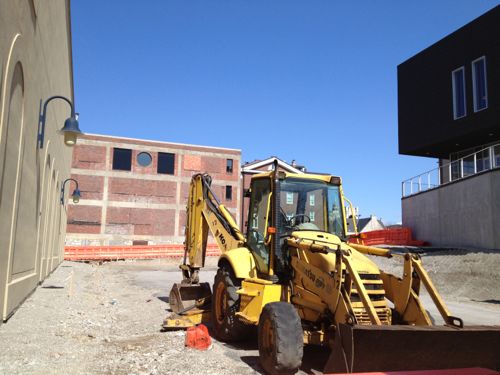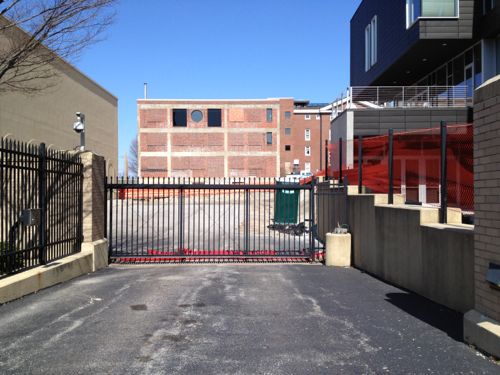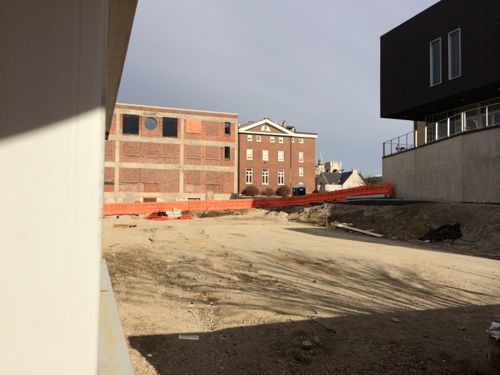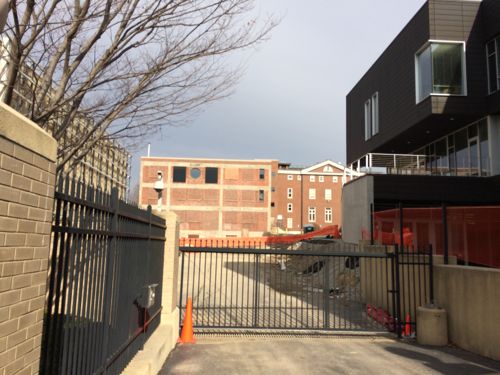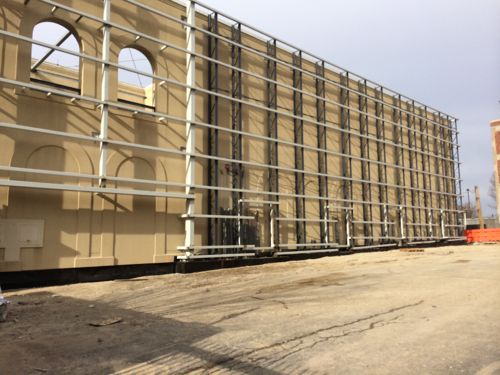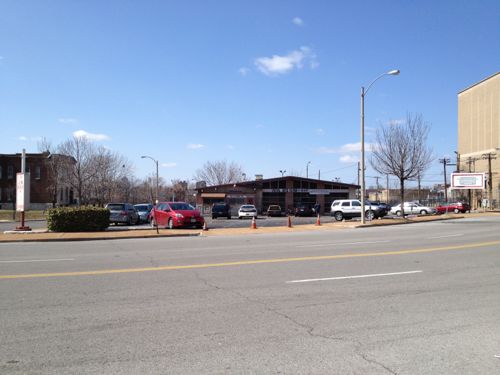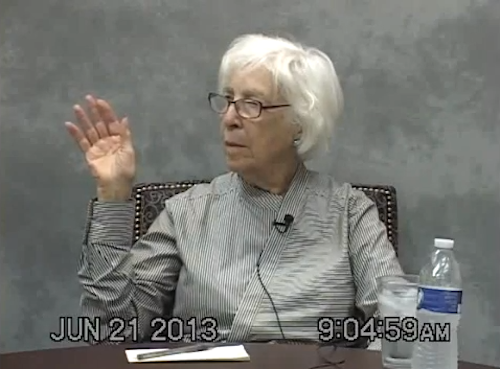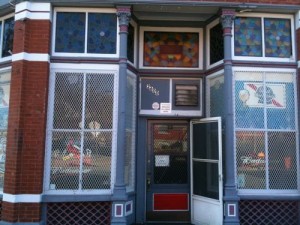From Food Desert to Food Oasis, The St. Louis Grocery Market Has Changed
For many years St. Louis’ near south side was a food desert:
Food deserts are defined as urban neighborhoods and rural towns without ready access to fresh, healthy, and affordable food. Instead of supermarkets and grocery stores, these communities may have no food access or are served only by fast food restaurants and convenience stores that offer few healthy, affordable food options. The lack of access contributes to a poor diet and can lead to higher levels of obesity and other diet-related diseases, such as diabetes and heart disease. (USDA)
With the recent opening of the Save-A-Lot in Jefferson Commons and Fields Foods last week, this former food desert is now a food oasis. St. Louis still has a number of food deserts, but this is slowly changing. Let’s take a look at the near south side.
Jefferson & Lafayette used to have a Foodland, but it closed years ago. On the SE corner an ALDI used to serve the same customer base, but it also closed years ago. Less value conscious customers have always had to go outside the area for their groceries. Now the grocery needs of most everyone should be met with two new grocery stores: Save-A-Lot and Fields Foods.
Save-A-Lot
The Save-A-Lot opened in the southern portion of the old Foodland space, now known as Jefferson Commons. I was at the community meeting in May 2012 when it was announced that Save-A-Lot was announced as the grocery store coming to the development, the reaction in the packed gymnasium was mostly disappointment. Save-A-Lot, based in Earth City, is a subsidiary of Minnesota-based SuperValu.
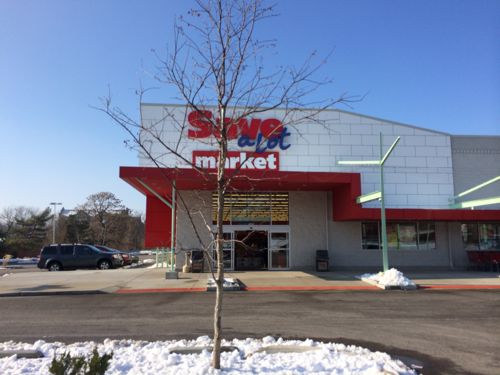
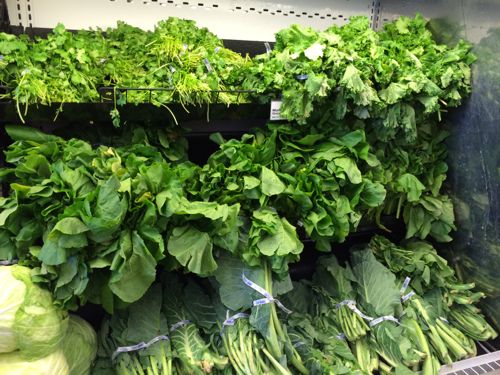
I’m not a huge fan of Save-A-Lot or ALDI’s, but I’m also not too snobby to shop at either, on occasion. We stopped in to shop at the new Save-A-Lot in December and I was very impressed. Sure, cases of product with the front of the boxes cut off doesn’t make for a special shopping experience. As a label reader, I rarely found an item with a bar code that didn’t contain items I won’t consume (high fructose corn syrup, for example). That said, the fresh greens & other produce was much better than I expected, beautifully displayed at the entry too.
Nice for the immediate area, but nothing to make me hop on a bus every week to shop.
Fields Foods
This new concept is what changes the local grocery market. Years ago downtown developer Craig Heller opened City Grocers to help sell more lofts. Better than nothing, it was an upscale convenience store: limited selection with high prices. When Schnucks opened Culinaria in 2009 Heller wisely shuttered City Grocers. Fields Foods is also an effort by a real estate developer, Chris Goodson of Gilded-Age, but the similarities end there.
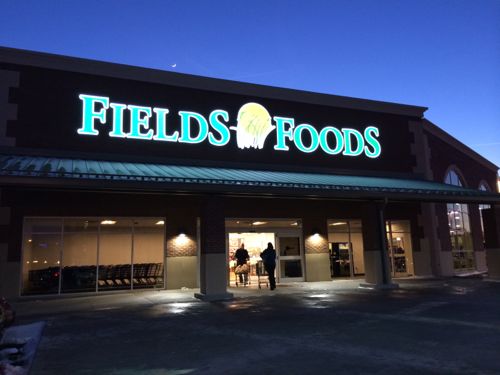
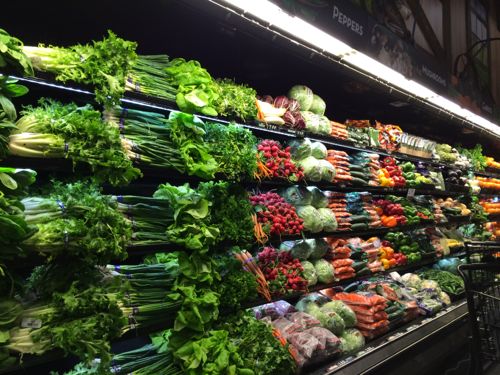
Fields Foods is part of a bigger concept:
The St. Louis Food Hub is a unique social enterprise that distributes, processes and retails foods from local farmers and food producers. Headquartered in the midst of the city’s historic Lafayette Square district, the food hub is a collaborative effort between three businesses that share the same vision.
- Fields Foods is a full-service grocery store specializing in bringing local foods to local shoppers.
- Virtual Food Hub is an online platform where local farmers and those who purchase their products connect to do business.
- Farm to Family Foods is a distributor, processor, and wholesaler of local foods.
Together, these Food Hub companies are pioneering the effort to consolidate a regional food system, setting new benchmarks for food desert remediation and breathing healthy life into urban renewal.
At the opening they talked about opening more Fields Food stores. Perhaps on the near north side?
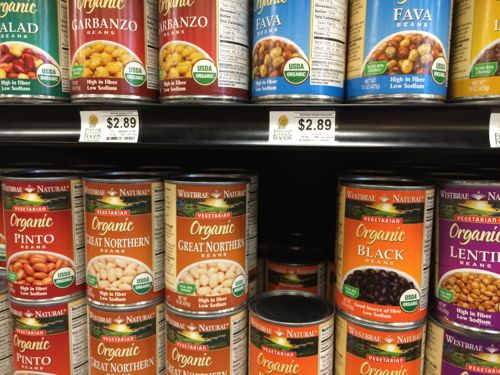
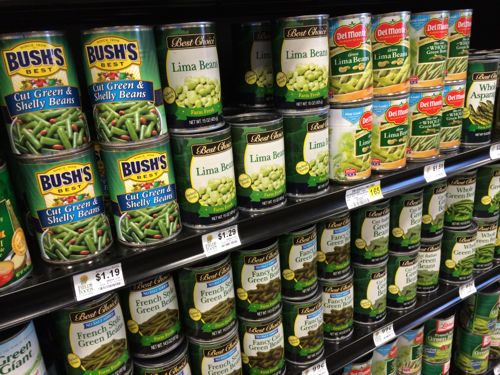
The Best Choice brand is an affordable line of products from Kansas City based Associated Wholesale Grocers, these products are also available at stores like Save-A-Lot and Straub’s. Fields Foods has a nice salad bar, hot food bar, deli, etc. We were there for the ribbon cutting on Friday and returned on Saturday to shop.
Impact
Fields Foods is larger than Culinaria, so it’s able to offer a wider selection of products. I can see myself taking the short bus ride to shop here once or twice a week. Others may stop by when driving to/from downtown.
The other store that will be impacted is Local Harvest Grocery, on Morgan Ford at Arsenal. Local Harvest carries a decent selection of organic and local products, Fields Foods will cut into that market. How much isn’t known yet.
When Whole Foods opens at Euclid & West Pine in 2015 it’ll be equal distance to downtown as Fields Foods, so it’ll be interesting to see what happens then. I’ve been frustrated by Culinaria’s selection for years, their recent modifications improved things a bit. Hopefully Fields Foods will be a wake up call to Schnucks that they can’t continue merchandising Culinaria the way they have been.
Future
As mentioned, we still have some areas that are a food desert. These areas could benefit by having a Fields Foods to provide a source for quality food and employment. I also wonder if the changes in the local market, especially the upcoming Whole Foods, will cause Trader Joe’s to get serious about a location in the city? I don’t like the initial site plan of Midtown Station, but the location would be excellent.
Also, Fields Foods might fail, predicting the grocery market isn’t easy. National chain Wild Oats, before being bought by Whole Foods, opened a second St. Louis area store in Chesterfield. Despite the affluence of Chesterfield the store failed and closed. After sitting vacant for a few years, a Trader Joe’s opened in the space. Local Harvest Grocery opened a 2nd location in Kirkwood in late 2012, but it closed less than a year later.
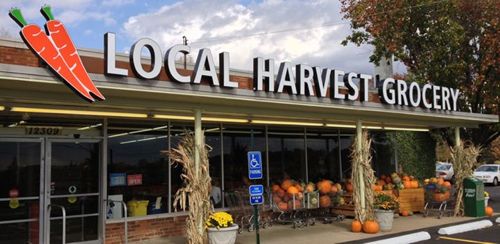
I think Fields Foods is making a big enough entry into the local grocery scene that some other stores, like Culinaria, will notice. Given the population isn’t increasing, every dollar spent at a new store is a dollar not being spent at an existing store.
I hope Fields Foods propers and opens new locations, each with good pedestrian access.
— Steve Patterson

